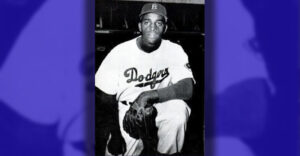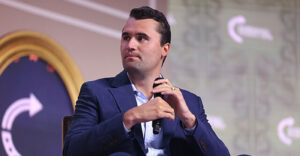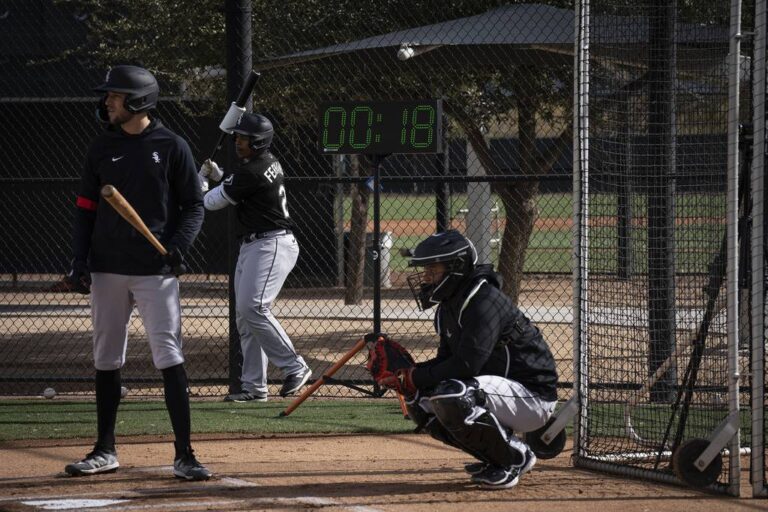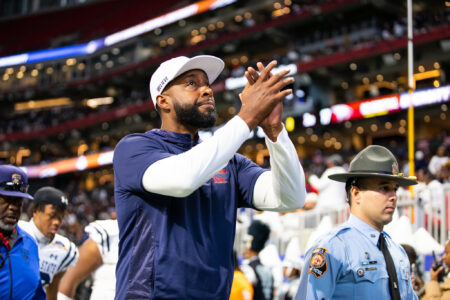Notice: Trying to get property 'post_title' of non-object in /home/ofzfvenynm4q/public_html/wp-content/plugins/wp-rss-feed-to-post/includes/wprss-ftp-display.php on line 109
MESA, Ariz.; GLENADALE, Ariz. — Drew Smyly’s head dropped when he saw the pitch-clock violation signal from the plate umpire.
Smyly at times struggled to get on the same page with Chicago Cubs catcher Tucker Barnhart during their first game working together. Twice he shook off the call heard through PitchCom during his Cactus League start Tuesday against the Milwaukee Brewers. Consequently, the timer expired before Smyly delivered the pitch, resulting in a ball.
Advertisement
“The pitch clock was way more of an adjustment than I thought it would be for me, to be honest with you,” Smyly said. “I feel like I’m a pretty fast pitcher, but I felt myself definitely being rushed throughout those two innings.
“It felt hard to get through a sequence. If you shake twice, by the third time the clock’s at one. Pitcher and catchers are going to have to do a much better job game planning before the start.”
Advertisement
Smyly rated as the quickest worker among Cubs qualified pitchers last season, according to Baseball Savant. With nobody on base, Smyly’s pitch-timer equivalent (9.5 seconds) fell well within the 15-second limit, and at 14.3 seconds he also was estimated to be within the 20-second restriction with runners on base. Smyly revealed after his spring debut Wednesday that Barnhart didn’t know what pitch was coming four or five times because there wasn’t enough time on the pitch clock for them to agree on the call.
Working within the constraints of the pitch clock remains a work in progress for the Cubs and White Sox one week into Cactus League games.
Sox second baseman Elvis Andrus had the clock on his mind before his first at-bat of the spring Monday at Camelback Ranch.
“I made sure everybody can see I was there (in the batter’s box) with 20 more seconds,” Andrus said.
Even the plate umpire noticed.
“The umpire was like, ‘Elvis, you have 20 seconds,’ ” Andrus said with a laugh. “I was like, ‘Believe me. I have to (get) used to this.’ ”
Andrus had a process behind the arrival.
“I would rather be super early than me rushing to home plate,” he said.
Advertisement
Some batters, such as Sox outfielder Eloy Jiménez, sliced out portions of a prebat routine. In Jiménez’s case, he cut his greeting to the plate ump and catcher, which was a light tap of the bat on the leg to each. Much of the spotlight has focused on the pitcher and the hitter. Catchers also are adjusting.
“The first game was kind of going quick on me,” Sox catcher Seby Zavla told the Tribune. “I felt like I had less time than I actually did. I had way more time than I thought and remembered from the minor leagues.
“PitchCom makes it easier. There’s a lot of things that we have that we didn’t have in the past to make the time go quicker and speed up in between pitches and at-bats.”
He said his most recent game “felt back to normal, slowed things down and was able to process.”
Sox pitcher Lance Lynn made a similar point after his second spring start Thursday against the Colorado Rockies.
“It’s one of those things once you get used to it, it’s fine,” he said. “It’s pretty much a ticking clock. Once you get used to it over there counting down, then you’ll be fine.”
Advertisement
Players have noticed some of the brisk games, a couple lasting around 2 hours, 30 minutes.
“You got to lock in,” Sox shortstop Tim Anderson told the Tribune with a laugh. Anderson recently participated in a commercial highlighting some of the rules. “It’s good. You get in, get what you need and compete.”
Reynaldo López glanced at a runner at first and then came set in the third inning Monday against the Seattle Mariners.
The Sox reliever was stopped before getting off a pitch, called for failing to deliver to the plate within in 20 seconds. In his first game this spring, López said he “kind of looked at the clock all the time, kind of freaking out.”
But overall, he said the experience was “good.”
López acknowledged in the past he wasn’t known for being the swiftest to the plate. He’s adapting accordingly.
Advertisement
“So now we have to be no thinking, just sign and go,” López said.
Manager Pedro Grifol has welcomed miscues with any of the new rules as teachable moments.
“There have been a few mistakes, but we’re also getting creative within the rules, which is what every other club is trying to do,” he said. “We meet as a staff. We meet with players. We meet with the guys that are pitching and the catchers. Everybody has really good ideas. These rules are going to play a factor in this. And it’s not just the violations. It changes the game a little bit. It changes the pace of the game. It changes the focus of the game.
“The one timeout for the batter can become a little bit of an issue if it’s not taken at the right time. Disengagements, stolen bases are up. Percentages of stolen bases are up. We’re just now starting to get the info on how it’s affecting the game, which just gives us information on how we need to continue to prepare for whatever the game is going to bring to us once the regular season starts.”
Nearly all of the Cubs’ clock violations nine games into the exhibition schedule have come against their pitchers, some of whom had it occur in their first spring game with the timer.
Two resulted in a walk, an outcome the Cubs certainly want to avoid once games matter. Hayden Wesneski committed a violation in the second inning Wednesday on a three-ball count. It resulted in a walk for the Mariners’ Evan White to put two runners on with nobody out. Wesneski got out of it but afterward wasn’t sure why he had gotten dinged.
Advertisement
“I’ll get used to it,” Wesneski said. “I didn’t really keep track (of the clock). After that I got into the groove of, look at the time and then go versus just feeling the game out. Because I felt like I was fast, but I guess I wasn’t.”
Cubs reliever Rowan Wick also was charged with a walk in the fifth inning Thursday. Barnhart had called time behind the plate, which isn’t allowed under the new rules unless it’s immediately followed by a mound visit by the catcher or stepping in front of home plate to give the defense signs. A pitcher can step off the mound if nobody is on base, as Wick did, but the pitch clock doesn’t stop and the ball still must beat the timer.
“We talked about a violation in the end, it’s a ball, so violation makes it sound like it’s a lot worse than it is, but the ones that we really want to avoid are the 3-2 counts,” pitching coach Tommy Hottovy told the Tribune. “Those are the type of things we’re talking through and working through, obviously. Guys are starting to get a feel of how to be able to hold the baseball using the clock.”
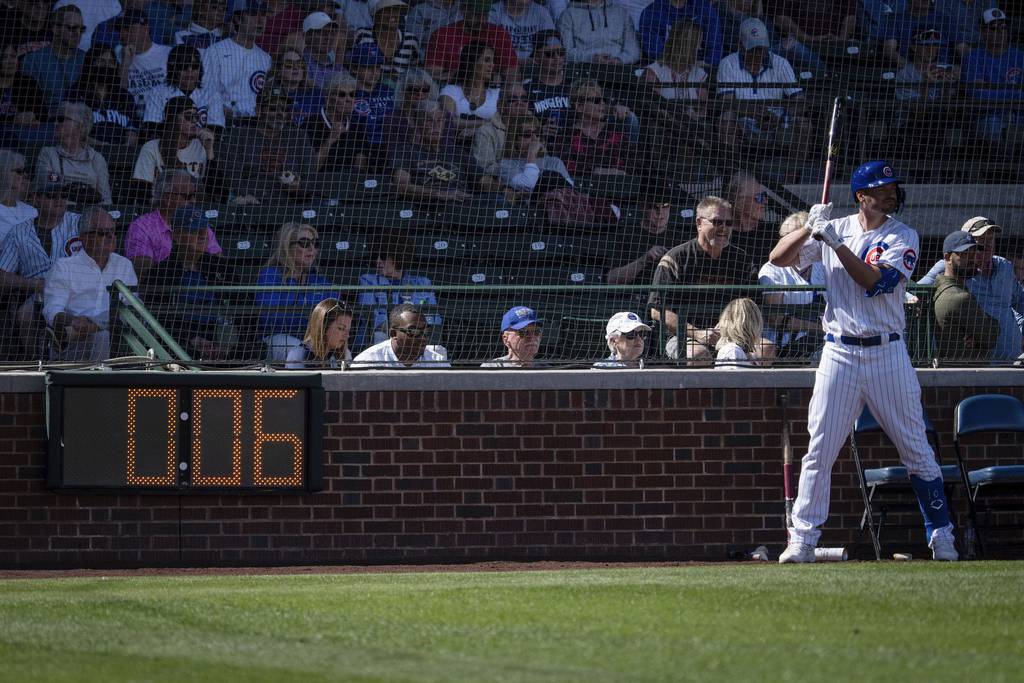
The Cubs could develop some sort of system to aid a pitcher when the clock nears zero.
Smyly believes it might be necessary for pitchers to have a default pitch to resort to if they can’t get on the same page in time so the catcher at least knows what is coming. Perhaps that go-to emergency pitch changes every inning or game, Smyly suggested, to ensure the opposition doesn’t key in on it. Or the pitcher could do something on the mound to signal what to go with, Hottovy said. Of course, if a pitcher throws four pitches and the first three were shaken off, the battery tandem automatically would know the pitch call.
Another alternative is having the pitcher also wear a PitchCom device to call his pitch, though Hottovy is leery of that setup because the pitcher and catcher could be pressing the buttons at the time and cause confusion. The Cubs have not tried that option in a Cactus League game, preferring to see how they can get through a game with the catcher leading.
Advertisement
“We have to get past the fact that you don’t have to be on the rubber waiting to get the signal,” Hottovy said. “Catchers are hitting (PitchCom buttons) early and so as long as the catchers are giving the signs early, it shouldn’t be a problem.
“If we’re letting the cadence of the game dictate when we push it instead of throw the ball back and throw, but it’s harder for catchers to be on the same page with the game calling, especially guys like Tucker and Yan (Gomes) who like to feel the hitter in the box and feel it out are now having to come up with predetermined pitches almost.”
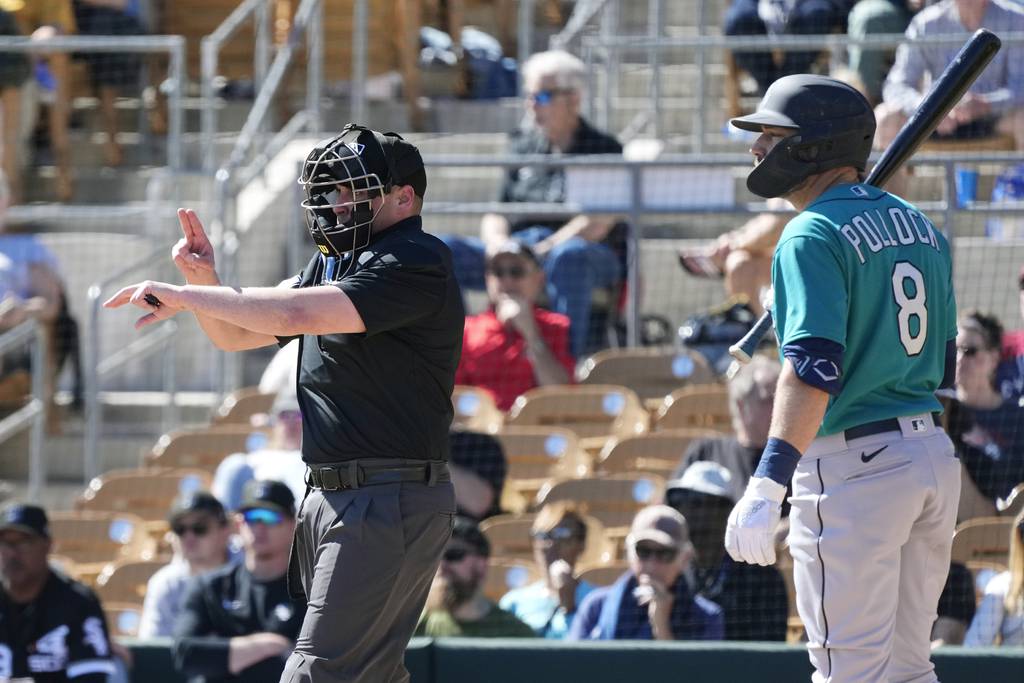
Major-league umpires also are learning the new rules. For the Cubs, that meant a violation incorrectly called on outfielder Brennen Davis during a split-squad game Monday.
Arizona Diamondbacks reliever Joe Mantiply exceeded the two-minute warmup window when he entered before the third inning. Davis had been standing near the box, understandably not wanting to step in while Mantiply was still throwing. The plate umpire should have awarded a ball and then reset the clock to 30 seconds entering the half-inning. Then if Davis wasn’t in the box and facing the pitcher with at least eight seconds left, a strike would have been given. Instead, the umpire simultaneously, and erroneously, called a dual violation on Mantiply and Davis to make it a 1-1 count to begin the at-bat.
“We were taught to have a routine and do it every day and mine took over the seven seconds that you are allotted to get ready, so I had to make an adjustment and shorten that up,” Davis said of his experience with it at Triple A last year. “But it’s an adjustment and everybody’s going to make the adjustment because you have to.”
Major League Baseball is meeting with teams this spring to discuss the rule changes. Cubs President Jed Hoyer likes the addition of the pitch clock after seeing it in action in the minor leagues last season, but he doesn’t envy the umpires’ jobs.
Advertisement
“They’re trying to call balls and strikes and also manage a completely new game,” Hoyer said. “That’s certainly been really challenging for those guys. So for everyone, it’s going to take time, but all in all it’s awesome. Getting games to move quickly is really important. I think fans will appreciate that.”
Cubs reliever Jeremiah Estrada was called for a violation during his inning in their combined no-hitter Friday against the San Diego Padres in Peoria, Ariz., despite two seconds visibly remaining on the clock. The Cubs are trying to understand why that happened. Hottovy speculated the outfield clock at the Padres spring training ballpark might not have been accurately synced to the timing of the umpire’s buzzer.
“There’s going to be some issues, and we’re all working to get better, the umpires as well,” Ross said. “We’re so used to the umpires having everything down and locked in and knowing how things go, this is new for them too. And so there’s a lot of conversations. They’re finding their new rhythm to things.”
Grifol said the communication with the umpires regarding the new rules has been “going good.”
“There’s mistakes being made on both ends,” he said. “They’re going through their spring training too. We’re going through ours. There have been a lot of questions on both sides and they’ve been really good with us, communicating and sharing things that they’re going to be looking for, which is probably the best way to do it.
“Tell us what you’re going to be looking for so we can nip that in the bud right now and not have that problem during the year.”
Advertisement
The early returns have led to dramatically reduced game times. Only one of the Cubs’ first nine Cactus League games has exceeded three hours, with the average game time around 2:31, notably below their average game time of 3:06 last season. The Sox haven’t had a game last three hours through eight spring games, averaging 2:33. Their average game in 2022 lasted 3:08.
The pitch clock is working as intended, but will the largely positive reviews from the Cubs and Sox carry into the regular season when the timer and violations could determine a game’s outcome?
